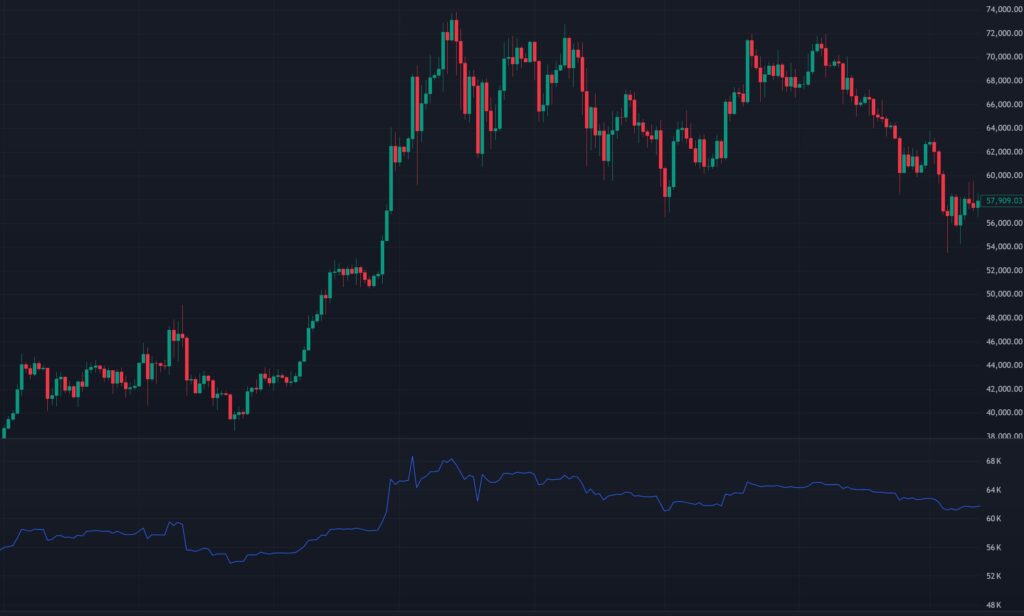The Volume Price Trend (VPT) Indicator, sometimes referred to as the Price Volume Trend (PVT), is a technical analysis tool that combines price movement and trading volume to gauge the strength and direction of a trend. It’s particularly useful for traders who want to understand the relationship between volume and price, offering insights into whether a trend is supported by genuine buying or selling pressure. In this article, we’ll explore what the VPT is, how it works, how to read it, and how it can be applied in trading strategies.
What Is the Volume Price Trend (VPT) Indicator?
The VPT is a momentum-based indicator that measures the cumulative relationship between price changes and volume. Unlike simple volume bars, which only show how much of an asset was traded, the VPT assigns direction to that volume based on whether the price rises or falls. It essentially tracks the “money flow” into or out of an asset, helping traders identify trends, confirm breakouts, or spot potential reversals.
Think of the VPT as a running tally of volume-weighted price momentum. It rises when price increases are backed by volume and falls when price declines are accompanied by volume, giving a clearer picture of market conviction.

How Does the VPT Work?
The VPT is calculated using a straightforward formula that builds on itself over time. Here’s the step-by-step breakdown:
- Calculate the Percentage Price Change:
- Determine the percentage change in price from the previous period (e.g., day, hour) to the current period.
- Formula:
Price Change % = [(Current Close – Previous Close) / Previous Close] × 100
- Multiply by Volume:
- Take the percentage price change and multiply it by the volume for the current period. This weights the price movement by the amount of trading activity.
- Formula:
VPT Increment = Price Change % × Current Volume
- Add to the Previous VPT Value:
- The VPT is cumulative, so you add the result from step 2 to the previous VPT value.
- Formula:
VPT = Previous VPT + VPT Increment
- Starting Point:
- On the first calculation (e.g., the first day of data), the VPT typically starts at zero or an arbitrary baseline, then builds as new data is added.
The result is a single line plotted on a chart, similar to other momentum indicators like the On-Balance Volume (OBV). The VPT increases when prices rise on volume and decreases when prices fall on volume, reflecting the directional flow of capital.
How to Read the VPT?
Reading the VPT involves interpreting its direction, slope, and relationship to price action. Here’s how to analyze it:
- Direction of the VPT Line:
- Upward Trend: If the VPT is rising, it indicates that volume is supporting higher prices—bullish momentum.
- Downward Trend: A falling VPT suggests that volume is backing price declines—bearish momentum.
- Flat Line: A flat or sideways VPT signals indecision or a lack of strong buying/selling pressure.
- Slope and Momentum:
- A steeply rising VPT shows strong buying interest, while a sharply declining VPT reflects aggressive selling.
- A gradual slope suggests weaker momentum, even if the price is moving.
- Divergences:
- Bullish Divergence: If the price makes a lower low but the VPT makes a higher low, it suggests buying pressure is building despite the price drop—a potential reversal signal.
- Bearish Divergence: If the price hits a higher high but the VPT forms a lower high, it indicates weakening buying pressure—a warning of a possible downturn.
- Confirmation with Price:
- Compare the VPT to price movements. For example, a breakout above resistance is more credible if the VPT is rising sharply, confirming that volume supports the move.
- Zero Line (Optional):
- While the VPT doesn’t have a fixed zero line like some oscillators, crossing above or below its own historical levels can act as a reference for shifts in momentum.
How to Use the VPT in Trading?
The VPT is a versatile tool that can enhance your trading strategy by providing volume-based confirmation of price trends. Here are practical ways to apply it:
- Trend Confirmation:
- Use the VPT to validate price trends. A rising VPT during an uptrend confirms bullish strength, while a falling VPT in a downtrend supports bearish momentum.
- Example: If a stock rallies from $50 to $60 and the VPT trends upward, it’s a sign the move is backed by real buying interest.
- Spotting Reversals:
- Look for divergences between the VPT and price. A bearish divergence (price rises, VPT falls) might signal an overbought condition, while a bullish divergence (price falls, VPT rises) could indicate an oversold opportunity.
- Example: If a stock hits a new high but the VPT fails to follow, consider taking profits or preparing for a short trade.
- Breakout and Breakdown Confirmation:
- Use the VPT to confirm breakouts or breakdowns. A sharp VPT increase during a breakout above resistance suggests a sustainable move, while a drop during a breakdown below support validates selling pressure.
- Example: A crypto token breaks $1.00 with a steep VPT rise—consider going long as volume supports the breakout.
- Identifying Accumulation or Distribution:
- A steadily rising VPT during a sideways price range might indicate accumulation by institutions (buying without pushing price up yet). A declining VPT in a range could signal distribution (selling off).
- Example: If the VPT trends up while a stock consolidates between $20 and $22, it might foreshadow a breakout.
- Combining with Other Indicators:
- Pair the VPT with tools like moving averages, RSI, or support/resistance levels for a more robust strategy. For instance, a rising VPT crossing above a key moving average could be a strong buy signal.
Conclusion
The Volume Price Trend Indicator is a powerful tool for traders who want to go beyond price action and tap into the underlying force of volume. By blending price changes with trading activity, the VPT offers a unique perspective on market strength, helping you confirm trends, spot reversals, and avoid false signals. While it’s not a standalone solution, integrating the VPT into your analysis can sharpen your edge in the markets.
Happy trading!

